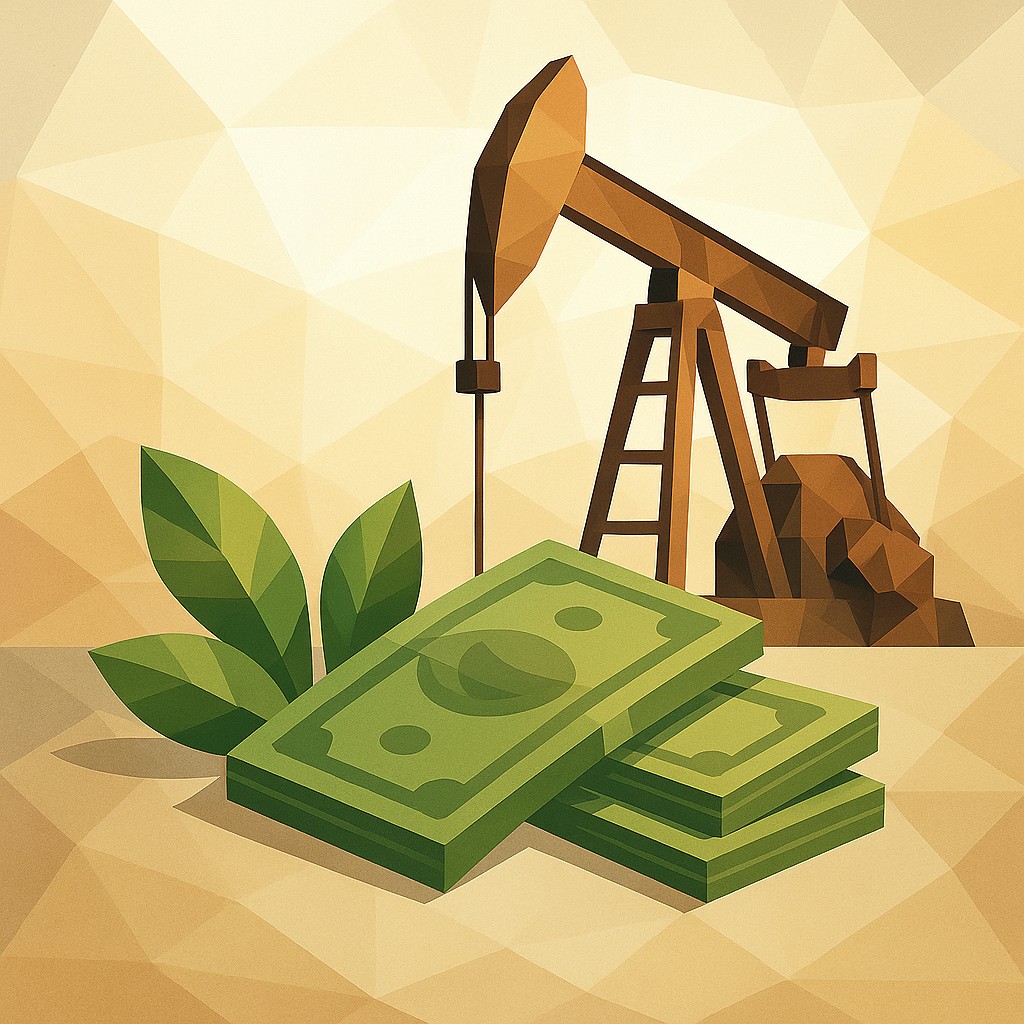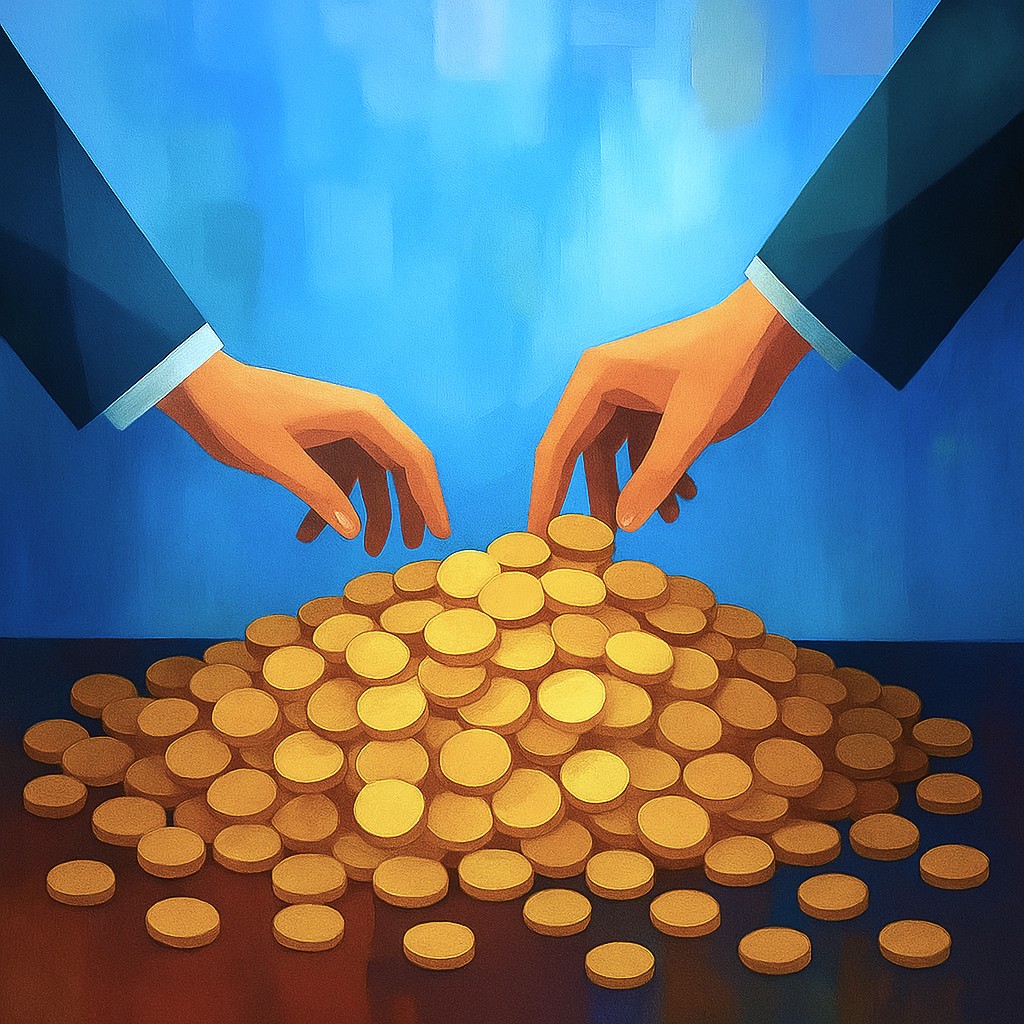The oil fund - a prisoner's dilemma
Strategic incentives can lead everyone to want to hedge as much as possible, but long-term it weakens the community's value.

AI-generated illustration from Sora.
Main moments
Norway has a unique financial buffer in the Oil Fund. At nearly 20,000 billion, it is the world's largest sovereign investment fund per capita. The Fund is our economic lifeline -- an insurance against future crises, a guarantor of the welfare state and a source of international financial power. Yet it is increasingly treated as an inexhaustible account of short-term politics, rather than as a strategic asset.
Politically, we find ourselves in a classic prisoner's dilemma. All political parties agree that the fund must be managed prudently, but at the same time everyone has incentives to extract as much money as possible to fund their own projects and win voters. The result? A slow but ever-increasing hollowing out of the fund's value -- both economically and politically.
Mathematically, we know how this ends: if all actors prioritize their own short-term gains, the community's resources depreciate in the long term. Norway thus faces a choice: Should we use the fund to buy us time — or to build the future?
Officially, Norway has a responsible management of the Oil Fund through the Action Rule, which states that we can only use 3 percent of the fund's value per year.
The oil fund's share of the national budget has increased from 8 per cent in 2010 to over 15 per cent today. This means that ever more of our public spending is funded by the fund, rather than by tax revenues and productivity growth.
Investments in future value creation are too low. Only a small proportion of oil money is spent on knowledge, technology and infrastructure that can provide lasting economic growth.
This is economic short-circuiting. Instead of using the fund to build new industries and strengthen Norwegian competitiveness, the money is being used to maintain an increasingly expensive welfare system without necessary reforms.
In game theory, the prisoner's dilemma describes how rational actors in a system can end up with bad outcomes because they act in self-interest. Transferring to Norwegian oil money, this means that all political parties have incentives to spend more of the fund — but in the long run the Community's resources are weakened.
The government will use more oil money to fund welfare and gain political support. The opposition wants to use more oil money to fund tax cuts or investments in business and defence. The business community wants more government support and subsidies, especially in conversion projects. The public sector is growing because it is politically easier to hire more people than to implement reforms.
This creates a vicious circle: Everyone is pulling in the direction of increased oil spending, because it is short-term beneficial -- but long-term it undermines the value of the fund.
Norway is not the first country that has faced such a challenge. Other resource-rich countries have handled their funds in various ways:
Chile has a rule that forces the state to save money in good times and spend more in bad times. This ensures that they do not become dependent on resource money, in the same way as Norway.
Kuwait's sovereign fund spends a larger proportion of its funds on investments in business development, energy conversion and research - something Norway still does to a limited extent.
The UAE has been actively using its oil fund to build new industries, such as artificial intelligence, aerospace and high technology. Norway has far more capital, but far less strategic use of it.
In Canada, natural resource funds are used to provide incentives for investments in new technologies and start-up businesses. This has contributed to a strong technology sector, particularly in cities such as Toronto and Vancouver.
What has Norway done? We have one of the most conservative fund policies in the world, but at the same time a high oil money spend. The result is that we are very good at saving, but bad at creating.
To avoid oil money spending slowly but surely eroding the fund's value, we need to change our strategy.
First, we need to make it politically costly to spend more than 3 percent. One possibility is to legislate that the rule of action cannot be broken without a broad majority in Parliament. This will reduce political temptations to use oil money as a short-term fix.
Second, we need to increase investment in future value creation. A greater share of the oil money should be spent on research, technology and infrastructure that create new revenue streams. If we had spent just 10 per cent more of the oil money on innovation, we could create thousands of jobs in emerging sectors.
Third, we need to think more strategically about the role of the fund. Instead of using the fund passively to buy international stocks, we could channel more funds into Norwegian growth companies, energy technology and digital infrastructure - as other countries have done.
Norway has a unique economic advantage, but we manage it as if the future never comes. The oil fund is not an ordinary budgetary tool, it is a strategic asset that must be used with caution.
The real test is not how much we can save, but how smart we can invest.
More from Langsikt

A new project for the state: The baby package
Stewardship of the natural resources and the welfare state are two of our nation's greatest triumphs. What is the next big project for A/S Norway?

Here are two suggestions for how the Oil Fund can be run ethically
When we invest in companies that contribute to violations of international law, we profit from the suffering of others. That's not necessarily problematic.

Preserving the wealth tax is good conservative policy
The wealth tax is an insurance against the greater vulnerability of the tax system, writes Aksel Braanen Sterri in a reply to Eirik Løkke.

Can't we trust the rich?
The country's richest are not fulfilling their part of the societal contract.